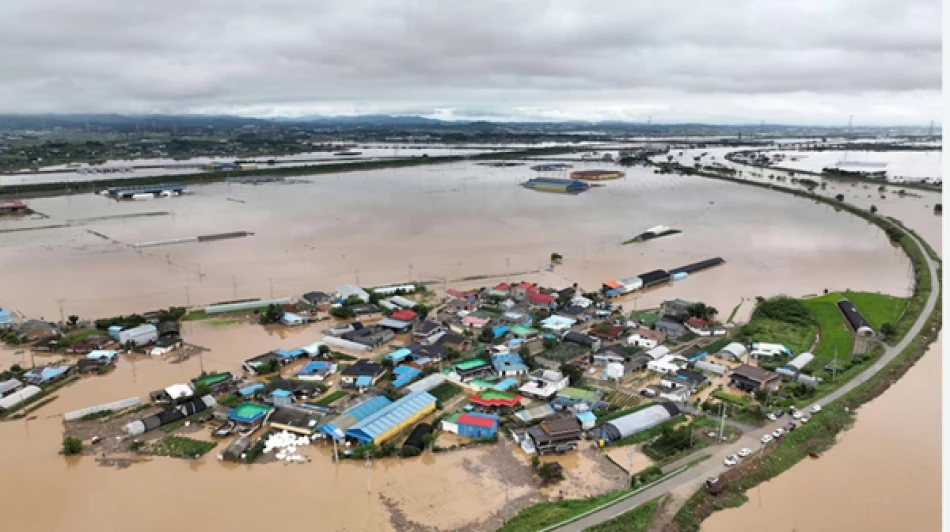
Heavy Rainfall Continues to Batter South Korea, Causing Widespread Disruptions
South Korea Battles Fourth Day of Deadly Floods as Climate Extremes Test Infrastructure
South Korea is grappling with its fourth consecutive day of torrential rainfall, leaving nearly 3,000 residents unable to return home and highlighting the country's growing vulnerability to extreme weather events. With four confirmed deaths, two missing persons, and livestock trapped neck-deep in rising floodwaters, the crisis underscores how even developed nations struggle against increasingly severe climate patterns.
Evacuation Crisis Deepens as Rain Continues
As of Saturday morning, 2,816 people remained displaced from the more than 7,000 evacuated during the intense rainfall period, according to South Korea's Interior Ministry. Weather officials have issued warnings across most of the country and predict rain will persist through Monday in some regions, raising concerns about additional landslides and flooding.
The human toll reflects the storm's severity: four fatalities and two missing persons paint a grim picture of nature's power against urban preparedness. Perhaps most striking are reports of livestock trapped up to their necks in rising waters—a visceral reminder of how quickly agricultural areas can become death traps during extreme weather events.
Infrastructure Under Siege
The damage assessment reveals the storm's broad economic impact. More than 641 buildings, 388 roads, and 59 farms have suffered flood damage, creating a complex recovery challenge that will likely take weeks to resolve. This infrastructure damage pattern mirrors what other developed Asian economies like Japan and Taiwan face during their increasingly intense monsoon seasons.
Economic and Agricultural Implications
South Korea's agricultural sector, already under pressure from changing climate patterns, faces another significant blow. The trapped livestock and damaged farms will likely impact food prices and supply chains in the coming months. For a country that imports much of its food, domestic agricultural disruptions carry amplified economic consequences.
A Growing Regional Pattern
South Korea's flooding crisis fits within a broader trend affecting East Asia's developed economies. Japan has experienced record rainfall events with increasing frequency, while China's urban centers regularly battle similar flood scenarios. The common thread: existing drainage and flood management systems designed for historical weather patterns prove inadequate against today's climate extremes.
Unlike developing nations where flood casualties often reach hundreds, South Korea's relatively low death toll demonstrates the value of early warning systems and evacuation protocols. However, the scale of displacement and infrastructure damage suggests that even well-prepared nations must fundamentally rethink their climate resilience strategies.
Testing Government Response Capabilities
The ongoing crisis serves as a real-time test of South Korea's disaster management capabilities. The government's ability to maintain evacuation shelters for thousands while coordinating rescue operations will influence public confidence in climate preparedness. Success here could provide a model for other developed nations facing similar challenges, while failures will highlight gaps in disaster response planning.
As climate scientists predict more frequent extreme weather events across East Asia, South Korea's handling of this crisis may well preview the new normal for the region's developed economies.
Most Viewed News

 Layla Al Mansoori
Layla Al Mansoori






